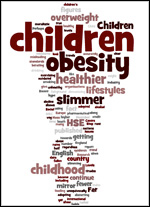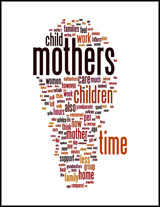Cheap’n’Nasty — Pornography and processed food.
Take a selection of dehydrated vegetables, textured soya protein and preservatives. Place in plastic pot. Add colourful logo, playful flavour names and a series of nudge-nudge-wink-wink advertising campaigns and — voila! You have Pot Noodle, stalwart component of the student diet, cultural icon and object of national curiosity.
Pot Noodle is a dietary phenomenon that just won't go away. It has moved from mid-seventies hi-tech food of the future to stereotypical student bedsit fodder with little effect on sales. In fact, consumption appears to be higher than ever. It is estimated that 300 pots are consumed per minute in Britain. And as Phil Hogan puts it:
‘The fact is, literally millions of tomorrow's captains of industry, commerce and the arts fell into an inebriate stupor last night with a warming King Pot Noodle inside them.’ (Observer 13/05/01)
All of this despite the fact that the product has little or no nutritional value, bears little resemblance to the named ingredients (Chicken and Mushroom? You're having a laugh!) and has a consistency more like wallpaper paste than the noodles it is supposed to emulate. No advertising campaign has made any effort to hide this. Indeed, its sheer nastiness could be seen as one of Pot Noodle's strongest selling points. Apart from the obvious attraction of instant hot food for those who are spending the day outside (construction workers, hill walkers. Etc.) and the rock bottom price, there appears to be no real justification for the existence of Pot Noodle. Yet thousands profess to love it. Which would suggest that it is loved exactly as it is, with no need for pretensions of health or nutrition.
The most recent series of television and billboard advertisements for Pot Noodles play on this concept of nastiness. In one, entitled ‘Desperate Dan’, a man is pictured trawling a seedy red light district, where instead of advertising sex, the neon signs advertise ‘Hot Hot Hot Dogs’ and ‘Exotic Food Videos’. He is looking for ‘something like a kebab, but harder’, an antidote to his wife's boring sandwiches. So Pot Noodle it has to be. Our hero finds what he is looking for (after being slapped in several establishments for mentioning Pot Noodle) in the form of a PVC-clad blonde who agrees to meet him ‘round the back’, where they noisily chow down on with all the appropriate panting noises. Fully replete, ‘Desperate Dan's’ last word on the matter is ‘That felt so wrong and yet so right!’ We are left with the tag line ‘Pot Noodle The Slag of all Snacks’.
This is one in a series of adverts that have unsurprisingly generated many complaints and subsequently a lot of both positive and negative publicity. Another billboard ad from the same campaign featured a man being fed a ‘Bombay Bad Boy’ flavoured Pot Noodle by a dominatrix, with the tag line ‘Hurt Me, You Slag!’ Cue tedious media speculation about the state of a nation that uses S&M imagery to sell snack foods. The company itself describes the campaign as an example of ‘product honesty’; they are successfully selling Pot Noodle as a product that is naughty and bad for you. Alan Young, director of HHCL and Partners, the advertising company responsible for this campaign, said: ‘I'm as proud of this as anything we've ever produced at HHCL. Creatively, it puts the Pot Noodle brand back where it belongs right on the top shelf.’`
A similar angle is being used in current advertising for Bird's Eye potato waffles. Magazine adverts are designed in red-top tabloid format, with what could only be described as ‘screaming’ headlines. ‘OOO-ER! POTATO WAFFLE PLAYS HUNT THE SAUSAGE WITH FRIED EGG!’ next to a queasy-looking picture of a waffle, a fried egg and a sausage. Or else: ‘POTATO WAFFLE TAKES MIDNIGHT DIP WITH SAUCY ITALIAN!’ frames a picture of a waffle with some tinned spaghetti. Both end with the slogan ‘THEY'LL GO WITH ANYTHING!’
The potato waffle, while not holding the same snack-food cult status as the Pot Noodle, has a similar market cachet. They are associated with stodgy fare, fried breakfasts, baked beans, hangovers, greasy spoon caffs. These advertisements pick up on this aspect as a major selling point. ‘Product Honesty’ is again the order of the day. There is no point in attempting to persuade consumers that Potato Waffles are sophisticated, sexy, or even particularly tasty. But they are part of the great British institution of packaged foods — not particularly wholesome, but desirable nonetheless. Twinning this with another tradition of great British tack tabloid gossip makes for a funny, self-aware advertisement.
What appears specifically unusual about both of these ad campaigns is that they promote products on the basis of their negative attributes. So just as porn magazines carry advertisements for ‘nasty girls’, Pot Noodles are sold as nasty, even harmful, products. The fact that this works as advertising suggests that people do either recognise or aspire to these qualities. Which should come as no surprise. What else do student males — or males who have forgotten they are no longer students — aspire to, except to be hardcore, bad, or perhaps on the edge?
A trawl around various sites on the Internet provided further insight into the target market for these products and tendency to personally identify with certain foods. ‘Big-Dave-Pot-Noodle-Fan’ (a reference to a previous advertising campaign) came up as the name of one chat room character. Another site devoted entirely to snack recipes, called ‘Listen To Your Stomach’ advertised a recipe for Pot Noodle on Toast, which advised adding less water than necessary to ensure a thick sauce suitable for a toast topping. The Pot Noodle website itself is a riot of spoof cult imagery, with tongue-in-cheek conspiracy theory references presumably aimed at the relatively intelligent male student/lad market.
The success of this advertising and the prevalence of internet references suggest that there is a real market for foods with what could be described as an anti-health image. It also suggests that people, and men especially, would identify with ‘Desperate Dan's’ need for ‘something harder’ than his wife's boring, healthy sandwiches. Stodgy, overly chemical foods are being marketed as a daring, slightly risqué alternative to home made food. This is the gastronomic equivalent of playing away from home, rejection of well-cooked, wholesome meals with all the family or relationship baggage that home eating entails.
Use of ‘naughty’, almost pornographic imagery in advertising certain foods could be seen as the flipside of the ‘spiritual detox’ phenomenon. Just as a macrobiotic diet has you in line for culinary sainthood, Pot Noodle fans are heading straight for the dark side, where the food is bad and the women badder. Rebellious, smutty, anti-health pretty impressive profile for a plastic pot of dehydrated noodles in sauce. And that association is ultimately as misguided as associating salad with sainthood. Pot Noodles are an inanimate foodstuff (for those who may still be a little confused) and subsequently cannot be rebellious, naughty or even just nasty.
Like the pathetic fallacy that has every romantic looking to the skies for rain when a relationship ends, our anthropomorphic associations between the foods we eat and the qualities we want in ourselves are faintly ridiculous. But we all do it try serving black forest gateau at an Islington dinner party and you'll see what I mean. Advertisers have always tapped into this tendency associating desirable abstract qualities with unrelated products is the staple activity of the industry. Yet we seem to be reaching a new level of food advertising, when a product can be effectively marketed as an anti-food. Perhaps we should see this as a filtering through of punk-rock values 25 years too late. If you can have anti-music music, anti-fashion fashion and even anti-label brands (Muji, take a bow), then why not anti-food food — food that reverses all preconceptions of what food should actually be?
Revolutionary as this may sound, it is not a new phenomenon, and can in fact be observed in your local newsagent. Children's sweets have been in the shapes of creepy-crawlies, spiders and other gooey things that'll upset your Aunty Nelly since time immemorial. The current Pot Noodle adverts, despite the S&M overtones, take their particular brand of naughtiness from the playground and the sweetie counter, rather than the back streets of Soho. So perhaps those who profess to need ‘something harder’ should drop the noodles and get out of the playground if they want to find out what hard really means





